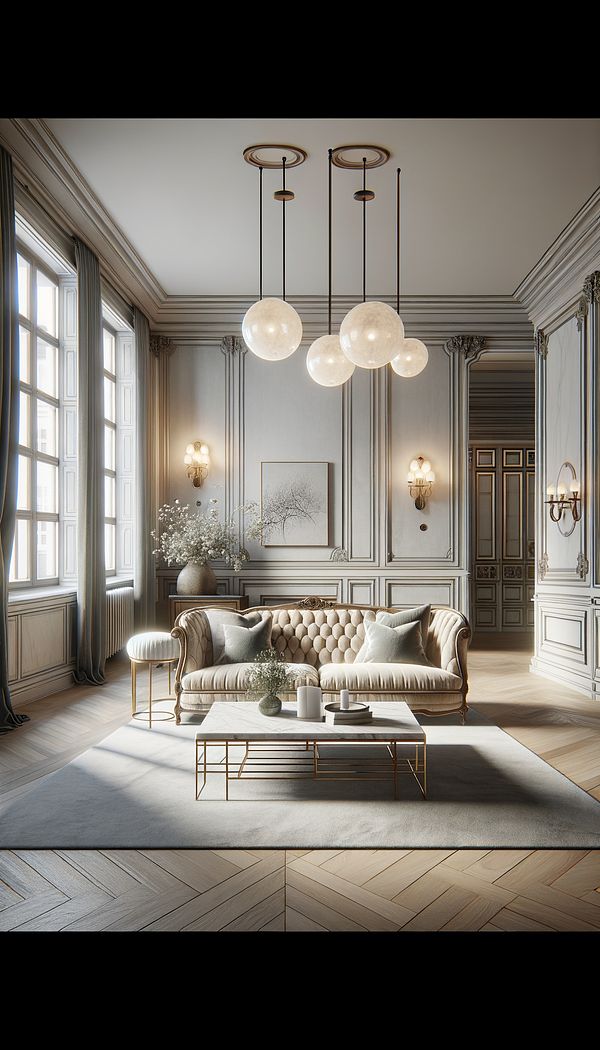What is European Style?
European style refers to a diverse blend of design influences from various countries across Europe.
Description
When we talk about European style in interior design, we’re referring to a sophisticated and varied palette of design influences that span the continent of Europe. This style is not monolithic but rather a tapestry of the different cultures, histories, and aesthetics that characterize the European countries. From the ornate and historic to the modern and sleek, European style encompasses a wide range of looks and feels, making it a versatile choice for homeowners and designers alike.
European style often brings to mind the elegant French countryside, Italian rustic charm, sleek Scandinavian minimalism, and the classic British aesthetic, among others. This style emphasizes quality and craftsmanship, often featuring luxurious materials, fine fabrics, and detailed woodwork. The overall effect is one of timeless elegance, comfort, and sophistication. Color schemes and patterns vary significantly, from the muted and earthy to the vibrant and patterned, reflecting the broad spectrum of European cultures.
Incorporating European style into a home usually involves integrating antique pieces with modern elements, creating a beautifully balanced and lived-in space. Furnishings and decor might include anything from classic European antiques to contemporary designs that still hold onto traditional European elements. The aim is to blend the old with the new in a way that feels both fresh and deeply rooted in history.
Usage
A homeowner may look to European style for inspiration when redesigning their living room, aiming to create a space that feels both refined and welcoming. They might incorporate a vintage French sofa, Italian marble coffee tables, and Scandinavian-inspired lighting fixtures to achieve this. In commercial spaces, a European-style approach could involve using plush British textiles for seating in a lobby or employing Italian design principles to create an elegant yet functional office space.
FAQs
-
Is European style limited to historical designs?
No, European style encompasses both historical and contemporary designs, blending traditional and modern elements.
-
Can European style be incorporated into small spaces?
Yes, European style can be adapted to any space size, focusing on smart, elegant designs and quality over quantity.
-
How can I blend different European influences without overwhelming a space?
Achieving a balanced blend involves selecting a few key pieces from different regions that complement each other in color, texture, and form, creating a cohesive look.
-
Are there any specific color schemes associated with European style?
European style is quite diverse in its color palettes, ranging from muted earth tones to vibrant and patterned schemes, reflecting the broad cultural influences.
-
What kind of materials are commonly used in European-style interiors?
Luxurious materials such as marble, silk, linen, and quality wood are frequently used, emphasizing craftsmanship and quality.
-
Do I need to source authentic European antiques to achieve this style?
While authentic antiques can enhance the European feel, reproductions or contemporary pieces with European influences can also be effectively used.
Practical Application
To incorporate European style into your home, start by identifying the particular European influences you're drawn to, such as French or Scandinavian. Then, mix in modern pieces with these influences, focusing on quality materials and craftsmanship. Use color schemes that resonate with your chosen influences, and don't be afraid to blend antique pieces with contemporary elements for a cohesive, elegant look. Finally, paying attention to detail and incorporating rich textures and fabrics will help bring the European aesthetic to life.
-
Design Styles478 articles
-
Furniture Types599 articles
-
Lighting111 articles
-
Decorative Techniques322 articles
-
Color & Patterns154 articles
-
CasegoodsCasegoods refer to a range of furniture pieces that provide interior storage space.
-
BuffetA buffet is a long, low piece of furniture designed for storage and serving food.
-
EmbossedEmbossed refers to a surface decorated with a raised or recessed design.
-
Serpentine FrontA serpentine front refers to a curved, undulating form on the front edge of furniture.
-
William & MaryWilliam & Mary refers to a style of furniture and interior design that was popular in England and later in the American colonies from 1689 to the early 1700s.
